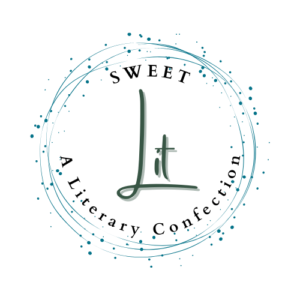In the Season of Little Things
In the season of little things, my daughter learns to say bee.
There are seventeen ladybugs in a board book. I know this because my husband counted them. My daughter points to each ladybug and says bee, bee, bee.
She calls all insects, bee. On the brick patio, she stretches out on her belly, chin on folded hands, to look at ants. She watches ants, and I watch her. How her hair is beginning to curl toward the nape of her neck, how the dimples at the back of her legs move when she kicks her feet with excitement, how she points and squeals, bee.
I push the stroller through a curtain of caterpillars. Suspended from tree branches, tiny lime green caterpillars squiggle at the ends of silk threads, visible only when the sun glints just right. The caterpillars cling to the shoulders of our coats, to our hair, to the stroller, and my daughter says bee.
We brush off the caterpillars, and these oak leaf-rollers will go on to munch leaves, spin cocoons, and become moths. Come fall, these moths will gather on our windows and doors, blink their way into the house lured by light, and my daughter will call them by name.
But for now, she points at the fruit flies that bother the kitchen compost, and the snail she carries in her hand to the kitchen table at lunch time, and the spider in the corner, and says of these delights, bee.
*
In the season of winged things, my daughter learns to say hum-bee.
Every buzzing honeybee, bumblebee, wasp, a hum-bee.
We sit together on the sunroom sofa and read aloud The Little Yellow Bee. We lift the sturdy cardboard flaps and point to a little yellow bee, a little blue snail, a nice purple spider, and a ladybug that is red.
Someday at dusk my daughter will bike beneath streetlights with an open mouth and never know the feel of bug on tongue; she will not remember the need for windshield wipers on summer nights. When she was just a flutter in my womb, I read a headline about the coming insect apocalypse. Monarch butterflies and rusty patched bumblebees. Gone. Fireflies and dragonflies. Gone. To gather losses so great they cannot be counted, entomologists rig nets to the roofs of cars and cruise back roads.
What will my daughter catch in glass jars, but light and air?
Beneath the sunroom windows, the rosemary bushes flower. Inside, she presses her face to the glass, all mouth breath and nose smear on the panes, and watches the hum-bees pollinate the rosemary flowers. They open. Outside, my daughter stands nose to needle, immersed in the aromatic fragrance and the buzzing of the bees, and she says hum-bee.
We take slow walks on sidewalks and down gravel alleys, and my daughter stops to see the hum-bees shaking our neighbor’s flowers. Her enthusiasm for these hum-bees is so great, I tell my husband I wish I could give her a new middle name, Bee.
Soon after, the arrival of invasive murder hornets make news. A local beekeeper finds his honeybee hive decimated, the bee carcasses decapitated. Entomologists hang traps in trees. I zoom in on the clear plastic jugs filled with orange juice, kefir, and rice wine, the bait of sweetness. They tag and track these hornets and destroy their nests. And still, hum-bee is the sweetest word on my daughter’s tongue.
*
In the season of falling things, I buy my daughter a bumblebee hand puppet.
I slip my hand into the black glove and the fuzzy stuffed bumblebee glides along atop my fist. When I flutter my hand, its wings flap. Buzz, buzz, I say. She shrieks and runs away.
She has never been stung, but give it a year and my daughter will come to fear a bee sting like she fears a sliver.
On a sunny day in late autumn, we’ll bring a blanket to the beach. My daughter will be wary of walking barefoot, will leap over wasps that buzz in clumps of dried out seaweed.
My daughter has not yet learned to fear for these pollinators, though she will. The bumblebee once thrived here but owing to the stresses of a warming planet they are declining, in danger of disappearing.
My daughter is far less likely to see a bumblebee in her childhood than her grandparents, than her parents, and so I will teach her to count each one a sweetness.
*
My daughter is nearly three now and she can reach for her toddler binoculars to get a closer look at an insect on our ceiling. She can sight wasps and honeybees and bumblebees and name which of these is buzzing about the kitchen.
Through her binoculars, she watches me. She watches as I trap these winged things with a water glass and sheet of paper. She watches me carry them to the open window, watches as I release them to the air. Fly! she says, fly!







[…] Sweet, I wrote an essay about watching my daughter learn to love the world, even insects, and the awareness that what […]